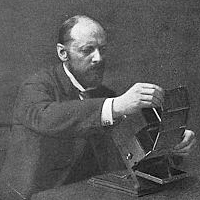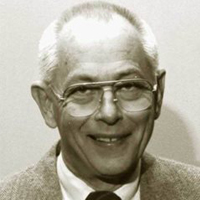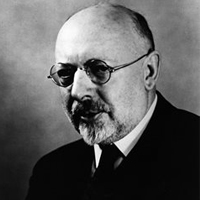Ives Medal / Quinn Prize Establishment
Get Involved
Frederic Ives Medal / Jarus W. Quinn Prize
The medal was established in 1928 to honor Frederic Ives for his pioneering contributions to color photography, three-color process printing, and other branches of applied optics.
In 1994 the Jarus W. Quinn Prize was added in recognition of Quinn’s 25 years of service as the society's first Executive Director.
Society Connection
Herbert E. Ives was a distinguished charter member and President from 1924 – 1925. He endowed the Ives Medal in honor of his father, Frederic Ives.
Jarus W. Quinn served as the society’s first Executive Director, guiding the growth of the Society from 1969 through 1994.
Key Funders
Ives Medal: Herbert E. Ives, William C. Beller Estate
Quinn Prize: Baush and Lomb, Inc., Milton M.T. Chang, Corning Incorporation, Edgar 0. Dixon, Eastman-Kodak Company, Farrand Optical Company, Newport Corporation, Optical Coating Laboratory, Inc., Perkin-Elmer Corporation, Perkin Fund, Plummer Precision Optics, Polaroid Foundation, Schott Glass Technology, United Lens Company, United Technology, Zygo Corporation
About Frederic Ives
 Ives is known for his work in color photography. The “Ives Process” replaced the use of hand-engraved wood block sand steel plate illustrations. For approximately 80 years (from 1890-1970) this process was used to photographically illustrate books, magazines, and newspapers.
Ives is known for his work in color photography. The “Ives Process” replaced the use of hand-engraved wood block sand steel plate illustrations. For approximately 80 years (from 1890-1970) this process was used to photographically illustrate books, magazines, and newspapers.
Ives was a US inventor, born in Litchfield, Connecticut in 1856. From 1874-1878 he was in charge of the photographic laboratory at Cornell University. He moved to Philadelphia, Pennsylvania where, in 1885, he was one of the founding members of the Photographic Society of Philadelphia. He was awarded the Franklin Institute's Elliott Cresson Medal in 1893, the Edward Longstreth Medal in 1903, and the John Scott Medal in 1887, 1890, 1904 and 1906. Ives was a pioneer in the field of color photography. He first demonstrated a system of natural color photography at the 1885 Novelties Exposition of the Franklin Institute in Philadelphia. His fully developed Kromskop (pronounced "chrome-scope") color photography system was commercially available in England by late 1897 and in the US about a year later. In 1903 Ives patented the parallax stereogram, the first "no glasses" autostereoscopic 3-D display technology. A compound image consisting of fine interlaced vertical slivers of a stereoscopic pair of images was seen in 3-D when viewed through a slightly separated fine grid of correctly spaced alternating opaque and transparent vertical lines, now known as a parallax barrier. The grid allowed each eye to see only the slivers of the image intended for it.
He is sometimes referred to as "the" inventor of "the" halftone process, but this is incorrect and Ives never made such a claim for himself. There was not one halftone process, but a considerable number of them, the earliest dating nearly as far back as the introduction of practical photography in 1839. They varied widely in their degree of practicality and the quality of their results. The first attempts involved directly etching the unique images formed on metallic Daguerreotype plates. Although pleasing results were obtained, etching the plates required great skill and care, the images could not be printed along with ordinary type, and the delicate plates wore out after a very small number of impressions, making such processes useless for publishing on a commercial scale. More practical processes started appearing in the 1860s, but high cost, special printing requirements or low image quality variously kept these early processes from coming into widespread use. Ives turned his attention to halftone processes in the late 1870s. Ives patented his first "Ives' process" in 1881. A few years later, Ives replaced this process with the much simpler one usually associated with his name. In the new process, an ordinary photograph was rephotographed directly onto the sensitized metal plate. During the 1890s, photographs reproduced by this second "Ives process" largely replaced the use of hand-engraved wood block and steel plate illustrations. It remained the standard process for photographically illustrating books, magazines and newspapers during the next eighty years. Although much more technologically sophisticated methods eventually came into use for creating the printing plates, the structure of most printed halftone images has remained virtually unchanged. He died 27 May 1937.
About Jarus W. Quinn
 Quinn served as the society's first Executive Director and guided the growth of the society from 1969 through 1994. He worked in molecular spectroscopy but is best known for his development of optics and photonics meetings, publications, and the growth of the society’s membership.
Quinn served as the society's first Executive Director and guided the growth of the society from 1969 through 1994. He worked in molecular spectroscopy but is best known for his development of optics and photonics meetings, publications, and the growth of the society’s membership.
Quinn earned a BS from St. Joseph's College. In 1964, he received a PhD in physics (molecular spectroscopy) from the Catholic University of America, where he remained as a research faculty member until 1969. During that time he became active in the society, just as it was experiencing rapid growth, due in large part to the invention of the laser.
In 1969, Executive Secretary Mary Warga was nearing retirement and needed assistance in administering the Society. As a result, Quinn was hired as the society's first executive director.
Quinn's vision for the society was one of a membership-driven organization that exists to implement and carry out the directives of the member leaders. He paid particular attention to making the society financially strong, enhancing its ability to serve the needs of its members. During his tenure, the staff size grew from 7 to 90, and the annual budget grew from under $1 million to over $10 million to accommodate the rapidly increasing membership and its needs as optical science and technology made dramatic advances. Successful fund drives enabled the society to move from rental space to its own headquarters building, and then to current headquarters location.
Quinn also sought to make the society a leader in optics knowledge, education and outreach. As part of that effort, journal publication operations were brought in-house, ensuring that the society's journals remained highly respected and in the forefront of scientific publishing. Under his leadership, conferences and topical meetings, such as the highly successful Conference on Lasers and Electro-Optics (CLEO) and the Optical Fiber Communication Conference (OFC), were established to serve industry needs, foster new areas of research and showcase scientific and engineering advances in the field. Another focus championed by Quinn was expanding international membership. He retired in 1994.
Quinn received numerous honors and awards throughout his long and prestigious career. In 2011, he was elected to Honorary Membership, the society's highest member designation, in recognition of "his exceptional leadership of the OSA as its Executive Director from 1969 through 1994 and the profound influence that he has had on making the society the success that it is today." He was named a Fellow in 1969 and was awarded the Distinguished Service Award in 1993, "for nearly a quarter-century of enthusiastic service and leadership in the scientific community as executive director of the OSA." In 2016, the society named its headquarters The Jarus W. Quinn Building. Quinn died on 11 August 2012, shortly before his 82nd birthday.
About Herbert E. Ives
 Ives was trained by his father in optics, photography and imaging and worked for him as an assistant and plant foreman while a teenager. In 1905, he earned a bachelor's degree from the University of Pennsylvania. In 1908 he earned his doctorate in physics from The Johns Hopkins University and wrote a dissertation on color photography. Ives held several industrial positions before joining the US Army Signal Corps in 1918 as head of aerial research.
Ives was trained by his father in optics, photography and imaging and worked for him as an assistant and plant foreman while a teenager. In 1905, he earned a bachelor's degree from the University of Pennsylvania. In 1908 he earned his doctorate in physics from The Johns Hopkins University and wrote a dissertation on color photography. Ives held several industrial positions before joining the US Army Signal Corps in 1918 as head of aerial research.
After the war he joined the engineering department of the Western Electric Co. (later known as AT&T) and by the 1930s he had become director of research. His first major responsibility was to develop commercial telephotography, a system similar to today's fax machines. AT&T demonstrated their new telephotography system in 1924, and offered it as a commercial product in 1925. This laid the foundation for transmitting news photos over a wire service.
AT&T wanted to achieve long-distance television, and Ives set out to refine his system, enlisting the assistance of more than 200 engineers, scientists and technicians. On April 27th, 1927, AT&T produced the first ever video transmission. An address by Secretary of Commerce Herbert Hoover was beamed over 200 miles from Washington D.C. to New York City.
Ives produced a color television system in 1929 and the following year demonstrated two-way television (or picture phone), using video telephone booths connecting the AT&T and Bell Labs headquarters buildings in New York. In 1937, it was the transmission of high-resolution television over coaxial cable. Despite these accomplishments, AT&T's interest in developing television technology waned during the 1930s with American conglomerate RCA picking up where AT&T had left off.
During World War II, he worked on night-vision devices and for his efforts received the US government’s Medal of Merit, the highest award given to a civilian.
A prolific scientist, Ives published more than 200 papers and held 100 patents. He was a charter member of the society and served as President from 1924 – 1925. He received the Ives Medal in 1937. He also received the Franklin Institute’s Longstreth Medal, and the American Academy of Arts and Sciences’ Rumford Prize. He died 15 November 1953.
